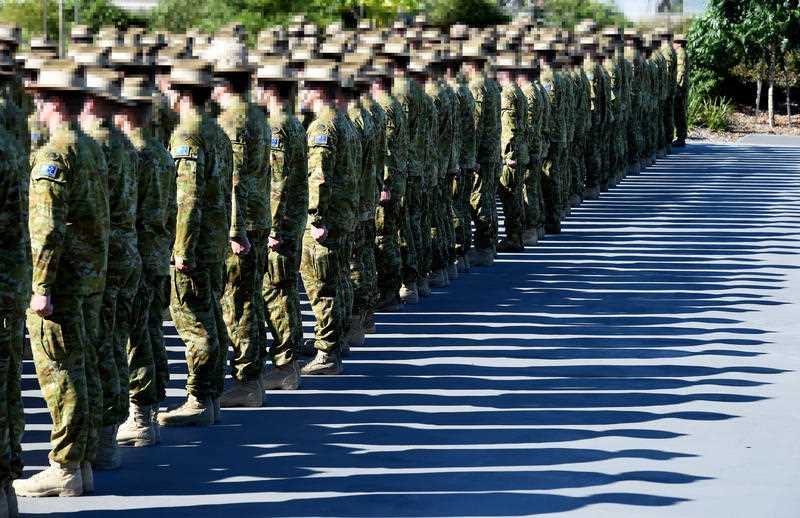Further details are expected to be revealed following recommendations Australian Defence Force projects be stripped back immediately to cut costs, including a reduction in infantry fighting vehicles from 450 to 129.
The Defence Strategic Review also urges an expansion or acceleration of programs for medium and heavy landing craft, long-range missiles and mobile land-based missiles to strike maritime targets.
However it says a second regiment of self-propelled howitzer artillery should be cancelled.
The review was foreshadowed by a change in defence posture to focus more on long-range strike capability and being able to combat and deter adversaries further from Australia’s shores.
It was conducted by former defence force chief Angus Houston and former defence minister Stephen Smith independently of government.
An unclassified version is expected to be released on Monday.
Defence Minister Richard Marles confirmed long-range missiles would become more important for Australia’s defence strategy.
“We think about what posture we need, projection is much more important for Australia today than it’s been before,” he told Sky News on Sunday.
“If we need to protect our connection to the world and if we need to play our part in providing an underpinning of the global rules-based order, these are ideas and things which are well beyond our border.”
Mr Marles said Australia was dealing with a “very different world” compared to the landscape underpinning the Dibb Report in 1985-96, “which has really been the heart of our strategic posture since that time”.
“(The Defence Strategic Review) is an incredibly important piece of work because what it seeks to do is really restate Australia’s strategic posture for the first time in more than 35 years,” he said.
One chapter of the review is known to specifically address funding issues and budget constraints, outlining that programs outstrip capacity by 24 per cent over the forward estimates.
It says new capability requirements coupled with demand for existing programs, as well as workforce pressures, means difficult decisions will need to be made.
Between the 2020 defence strategic update and the start of the review in August 2022, there were $42 billion worth of defence announcements over the decade to 2032/33 with no additional provisions in the budget.
The defence budget also had to contend with a $15 billion reduction in allocated spending over the same decade due to reallocations and efficiency dividends, according to the review.
Opposition defence spokesman Andrew Hastie said the selection of recommendations that had been dribbled out so far were concerning.
While he was yet to see the review, he said the Australian Defence Force was “run into the ground” by the Rudd-Gillard-Rudd governments over 2007-2013.
“As a member of the ADF during that period, I saw this decline in capability firsthand – both in Australia and on operations,” he said.
“The opposition will always act in Australia’s national interest in holding the Albanese government to account for the big defence decisions that our deteriorating strategic circumstances demand.”
Nationals leader David Littleproud said he wanted to work constructively with the government to address emerging threats.
“We’re an island nation and that’s why submarines make sense,” he told Sky News.
“But also around cyber security and the type of weaponry that we will need, and the capability and capacity of our defence force, and where they should be located in this big country … we’ll be constructive in working through that with the government.”
He said the AUKUS agreement would protect Australia’s sovereignty for generations to come and was a legacy left by the coalition.
By Poppy Johnston in Canberra



